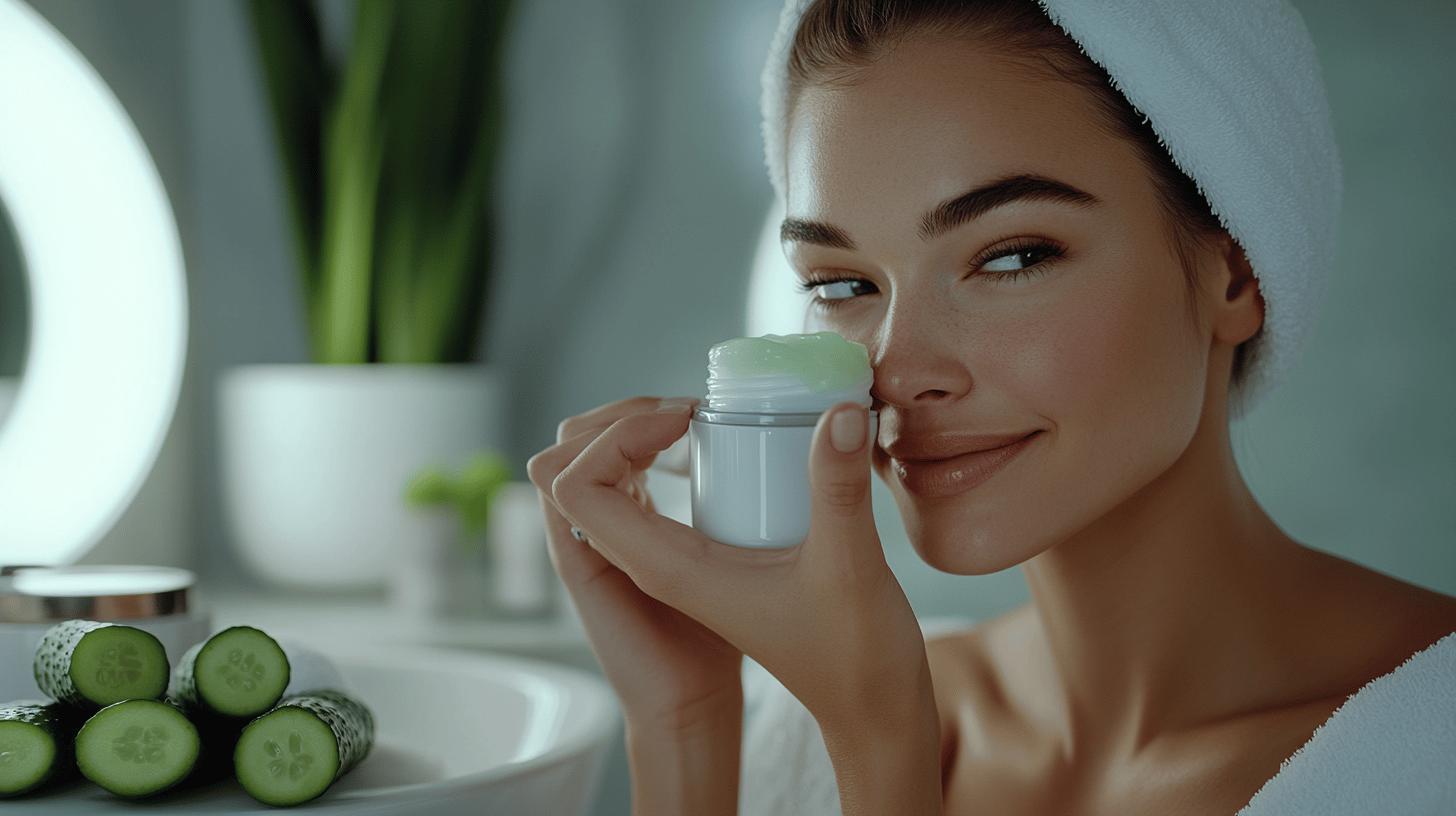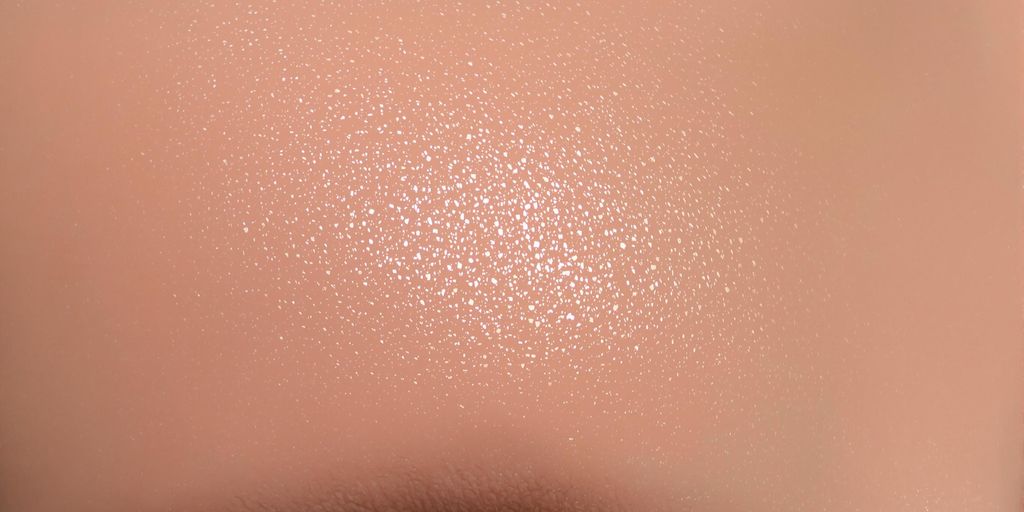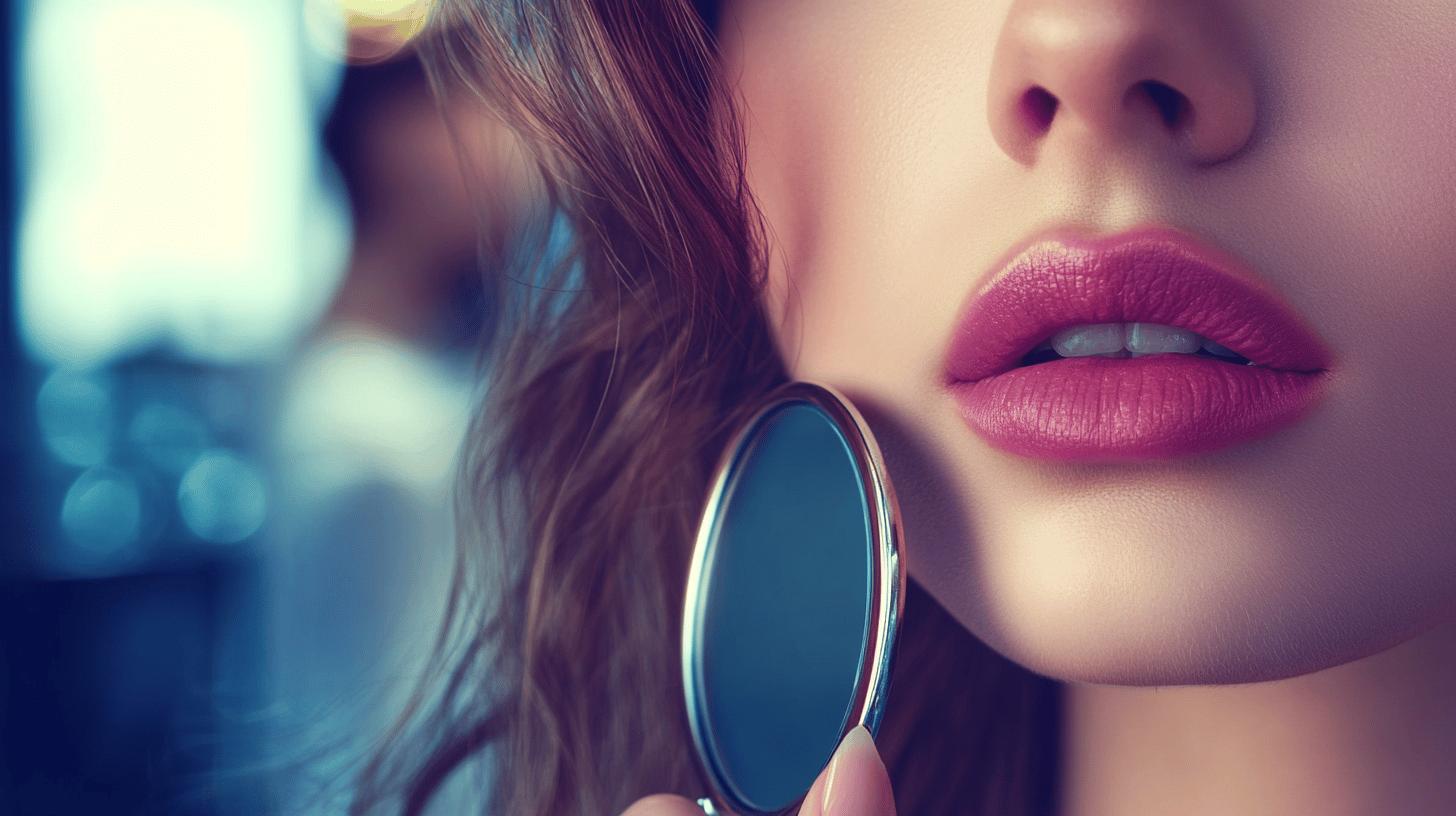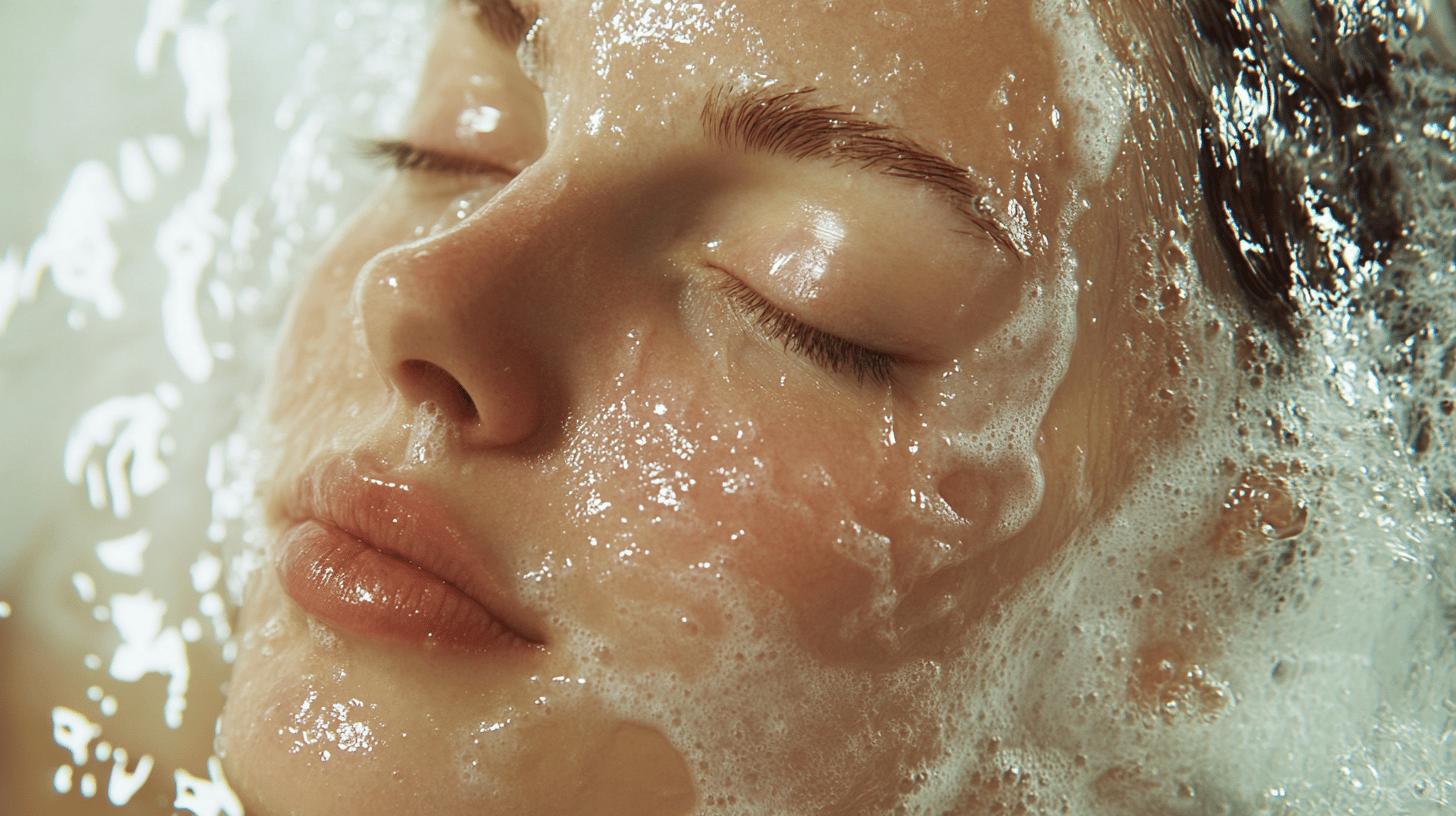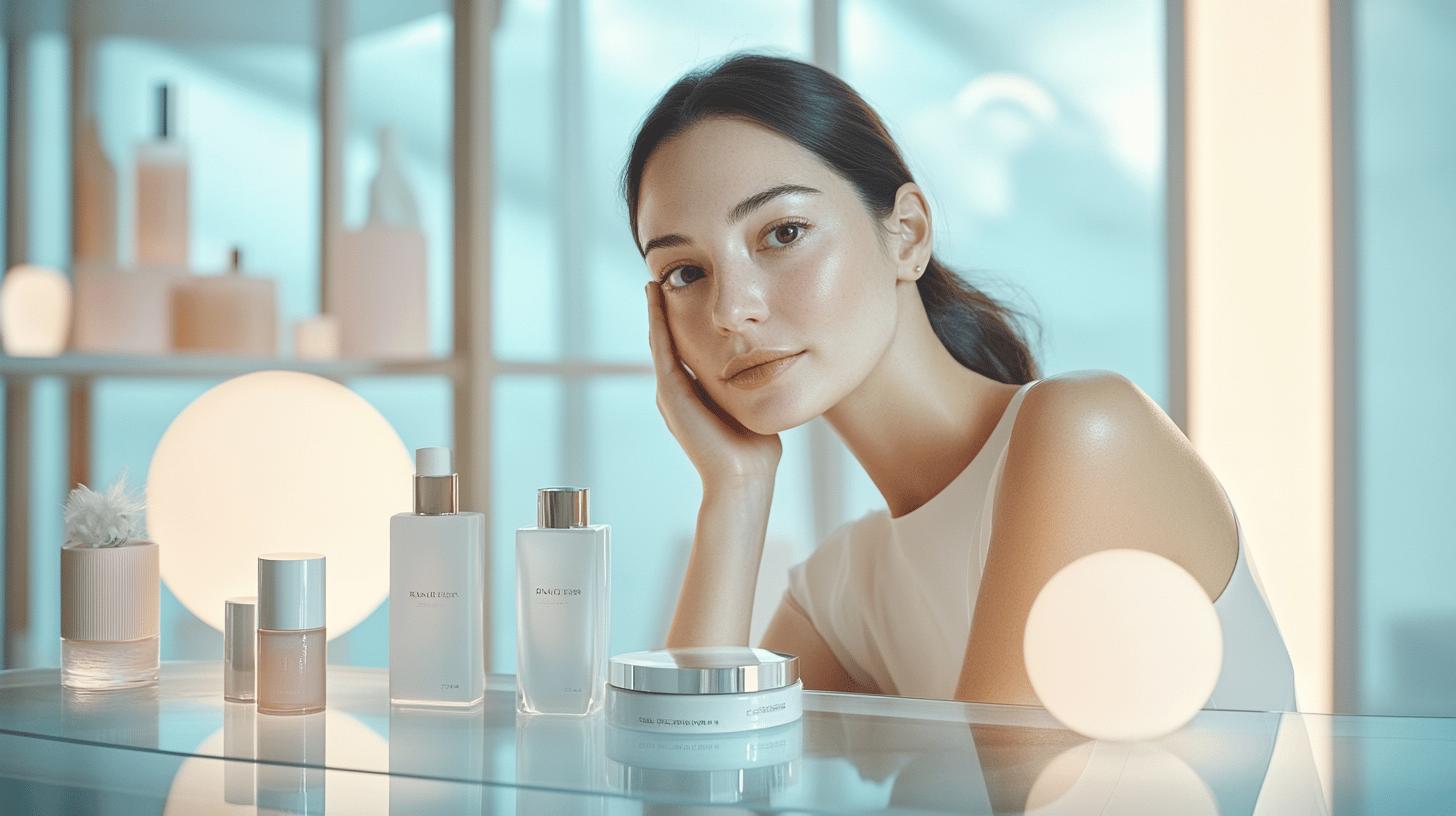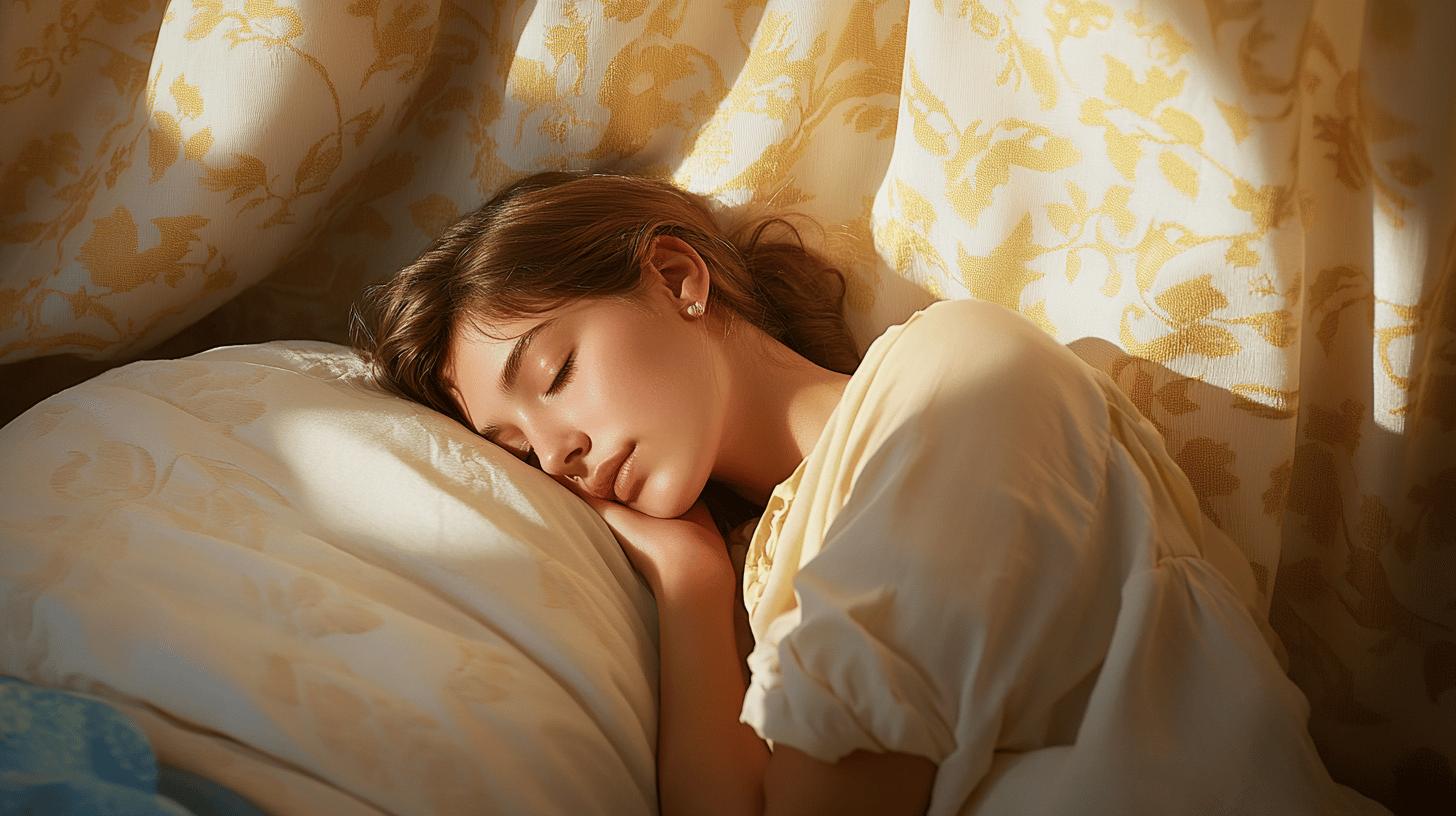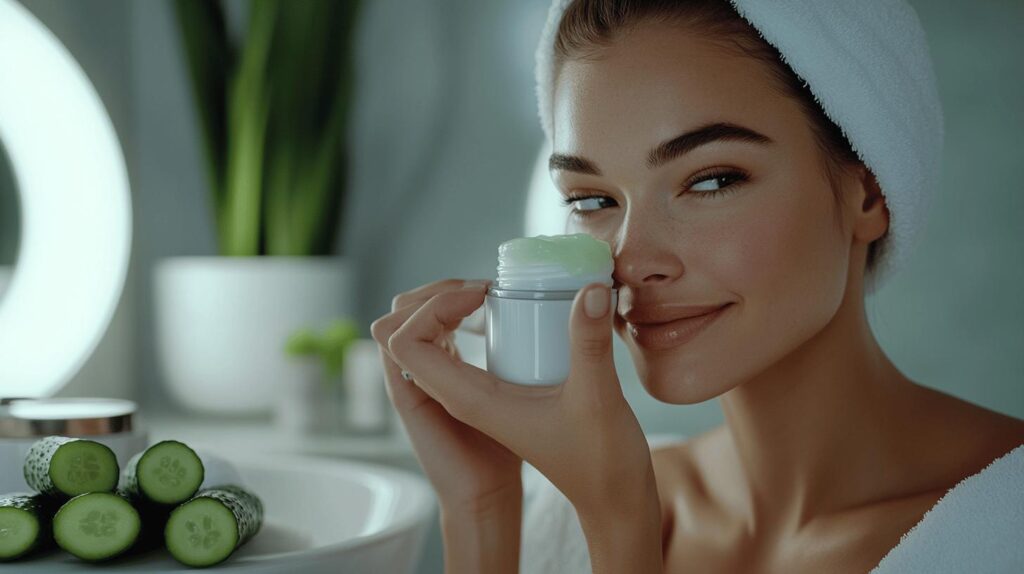Are dark circles and puffiness under your eyes stealing your confidence? You’re not alone. These common concerns often hint at hidden issues such as genetics, aging, and lifestyle habits. While they may seem inevitable, understanding their root causes is the first step towards effective management. In this article, discover the science behind these under-eye dilemmas and explore solutions ranging from topical treatments to lifestyle changes. Whether it’s due to allergens or a busy schedule, there’s a path to reclaiming a bright and youthful gaze. Join us as we illuminate the way to clearer eyes.
Understanding the Causes of Under-Eye Dark Circles and Puffiness
Dark circles and eye puffiness often stem from a combination of genetic and lifestyle factors. Genetic predispositions can lead to hyperpigmentation or thinner skin under the eyes, making blood vessels more visible and creating a darker appearance. Lifestyle choices, such as excessive screen time or poor diet, can exacerbate these genetic tendencies. Environmental factors like pollution and stress also play a role in worsening under-eye appearances.
Sleep deprivation is a common contributor to under-eye circles and puffiness. Lack of adequate rest can lead to fluid retention, causing swelling and a darker hue under the eyes. Allergies further aggravate this condition, as they often induce itching and rubbing of the eyes, which can break tiny blood vessels and heighten discolouration. Those with allergies might also experience increased fluid accumulation due to sinus congestion, contributing to a puffy appearance.
Dehydration and ageing are significant factors impacting under-eye aesthetics. When the body lacks sufficient hydration, it can cause the skin to appear dull and the eyes to look sunken. Ageing naturally decreases skin elasticity and volume, making blood vessels more prominent and exacerbating both dark circles and puffiness. As individuals age, the skin loses collagen and becomes thinner, further highlighting these concerns. Keeping hydrated and maintaining a healthy lifestyle can mitigate some of these effects.
Topical Treatments for Under-Eye Concerns
Topical treatments for under-eye issues often contain active ingredients that target specific concerns like puffiness and dark circles. Ingredients such as caffeine are renowned for their ability to constrict blood vessels, reducing the appearance of puffiness and dark circles. Vitamin C is frequently used for its brightening properties, helping to even out skin tone and diminish pigmentation. Hyaluronic acid is a powerful hydrator, plumping the skin and reducing the appearance of fine lines and wrinkles. Retinol, a form of vitamin A, is widely recognised for its anti-ageing benefits, promoting cell turnover and improving skin texture. Together, these ingredients form a potent combination found in many over-the-counter creams and serums designed to rejuvenate the under-eye area.
- Neutrogena Hydro Boost Gel-Cream: Known for its hydrating properties, this product is highly rated for its lightweight formula that plumps the skin.
- The Ordinary Caffeine Solution 5% + EGCG: Users appreciate its effectiveness in reducing puffiness and dark circles, reporting visible improvements in a few weeks.
- Olay Eyes Retinol24 Night Eye Cream: Contains retinol, boosting skin regeneration and improving texture with consistent use.
- La Roche-Posay Pigmentclar Eyes: Features caffeine and niacinamide, targeting dark circles and providing a refreshed look.
- Kiehl’s Creamy Eye Treatment with Avocado: Highly moisturising, it is praised for its rich texture that nourishes and revitalises the under-eye area.
Consistency and proper application are crucial for achieving optimal results with these treatments. Applying products twice daily, morning and night, ensures maximum absorption and effectiveness. A gentle patting motion with the ring finger helps avoid unnecessary tugging on the delicate skin around the eyes. Users often highlight the importance of patience, as visible improvements typically manifest over several weeks. Regular use, coupled with a tailored skincare routine, can significantly enhance the under-eye area’s appearance, promoting a youthful and refreshed look.
Natural and Home Remedies for Under-Eye Puffiness and Dark Circles
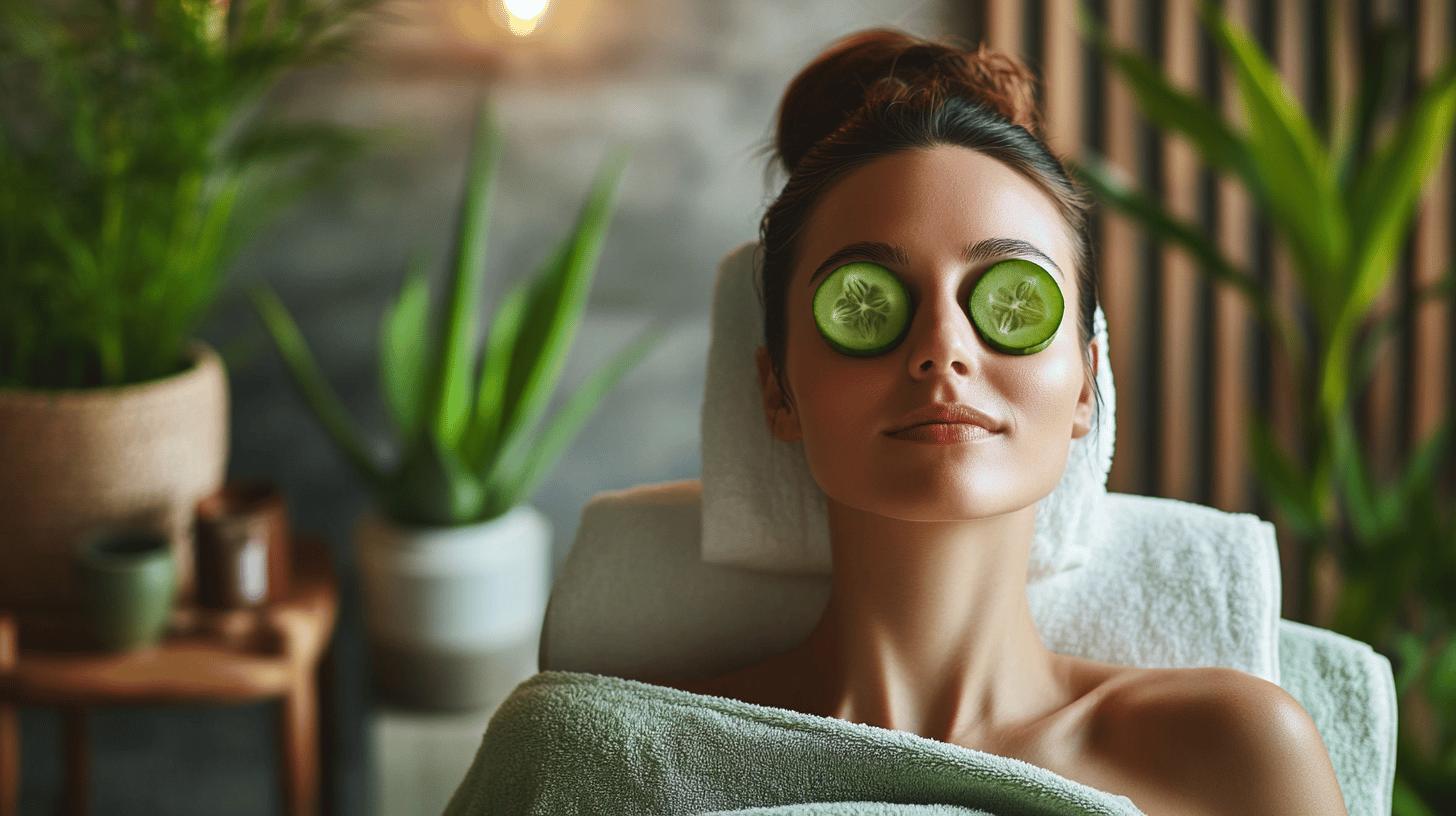
Natural ingredients are highly valued for their soothing properties, which can alleviate under-eye puffiness and dark circles. Cucumber slices, for instance, are rich in antioxidants and flavonoids, helping to reduce swelling and provide a cooling effect. Tea bag compresses, particularly those made from green or black tea, contain caffeine and tannins, which constrict blood vessels and diminish puffiness. Aloe vera gel is another popular option, known for its hydrating and anti-inflammatory benefits, which nourish and calm the skin. These readily available remedies offer a gentle and non-invasive approach to improving the under-eye area.
- Cucumber Slices: Place chilled slices over the eyes to reduce swelling and provide a cooling sensation.
- Tea Bag Compress: Steep tea bags in hot water, cool them, then apply to the eyes to reduce puffiness and dark circles.
- Aloe Vera Gel: Apply a small amount under the eyes to hydrate and soothe irritation.
- Cold Compress: Use a chilled cloth or specialised gel mask to decrease inflammation and refresh tired eyes.
While effective, these remedies offer temporary relief and are best suited for occasional use, such as after a long day or sleepless night. For sustained improvements, they should be complemented with other treatments and lifestyle adjustments, such as regular hydration and adequate sleep, to address the underlying causes of under-eye issues more comprehensively.
Professional Under-Eye Treatments: Laser Therapy, Fillers, and More
Professional treatments offer intensive solutions for individuals seeking long-term results in addressing under-eye dark circles and puffiness. These treatments are designed to tackle deeper skin issues, such as loss of volume, pigmentation, and elasticity, which are often not fully addressed through topical treatments alone. The benefits of professional interventions include more pronounced and lasting improvements, allowing individuals to achieve a refreshed and youthful appearance. Many of these procedures are performed by certified dermatologists or cosmetic surgeons, ensuring both efficacy and safety.
Several types of professional treatments are available, each tailored to specific under-eye concerns. Laser therapy for eyes is particularly effective in reducing pigmentation and stimulating collagen production, improving skin texture and tone. Under-eye fillers, typically composed of hyaluronic acid, restore volume and smooth out hollows, resulting in a more even and youthful appearance. Chemical peels help to exfoliate the skin, removing dead cells and promoting new cell growth, which can reduce the visibility of dark circles. The effectiveness of these treatments largely depends on the individual’s skin type and the severity of their under-eye issues, with many users reporting noticeable improvements after just a few sessions.
User experiences with professional treatments are generally positive, with many highlighting the immediate and significant results achieved. Experts recommend consulting with a qualified professional to discuss individual needs and expectations, ensuring the chosen treatment aligns with personal goals. It is important to consider potential side effects and recovery time, which can vary based on the procedure. Dermatologists often suggest combining professional treatments with a consistent skincare routine and healthy lifestyle to maintain and enhance results over time.
Lifestyle Changes and Preventative Measures for Under-Eye Health
Adequate sleep and proper hydration are fundamental in combating dark circles and puffiness under the eyes. How much sleep is needed to reduce under-eye circles? Typically, adults require 7 to 9 hours of quality sleep each night to allow the body sufficient time to repair and regenerate skin tissues. Sleep hygiene, including maintaining a regular sleep schedule and creating a restful environment, plays a crucial role in ensuring restorative sleep. Hydration is equally essential, as it helps maintain skin elasticity and prevents the eyes from appearing sunken. Drinking at least 8 glasses of water daily helps flush out toxins and supports overall skin health, reducing the severity of under-eye concerns.
- Adopt a Regular Sleep Routine: Establish a consistent sleep schedule to promote quality rest.
- Stay Hydrated: Drink plenty of water throughout the day to maintain skin elasticity.
- Use Sun Protection: Apply sunscreen daily to protect the delicate under-eye area from UV damage.
- Limit Screen Time: Reduce eye strain by taking regular breaks from screens to prevent fatigue and puffiness.
- Manage Stress: Practice relaxation techniques such as meditation or yoga to alleviate stress-induced under-eye issues.
A balanced diet can also play a significant role in under-eye health. Which nutrients are essential for reducing dark circles? Vitamins C and K, along with iron-rich foods, are crucial in maintaining skin vitality and reducing pigmentation. Incorporating fruits and vegetables like berries, spinach, and oranges into the diet can enhance skin health. Additionally, reducing salt intake can prevent fluid retention, which contributes to puffiness. Overall, lifestyle changes, when combined with a proper skincare routine, can significantly mitigate under-eye issues and enhance one’s natural radiance.
Expert Recommendations and User Reviews
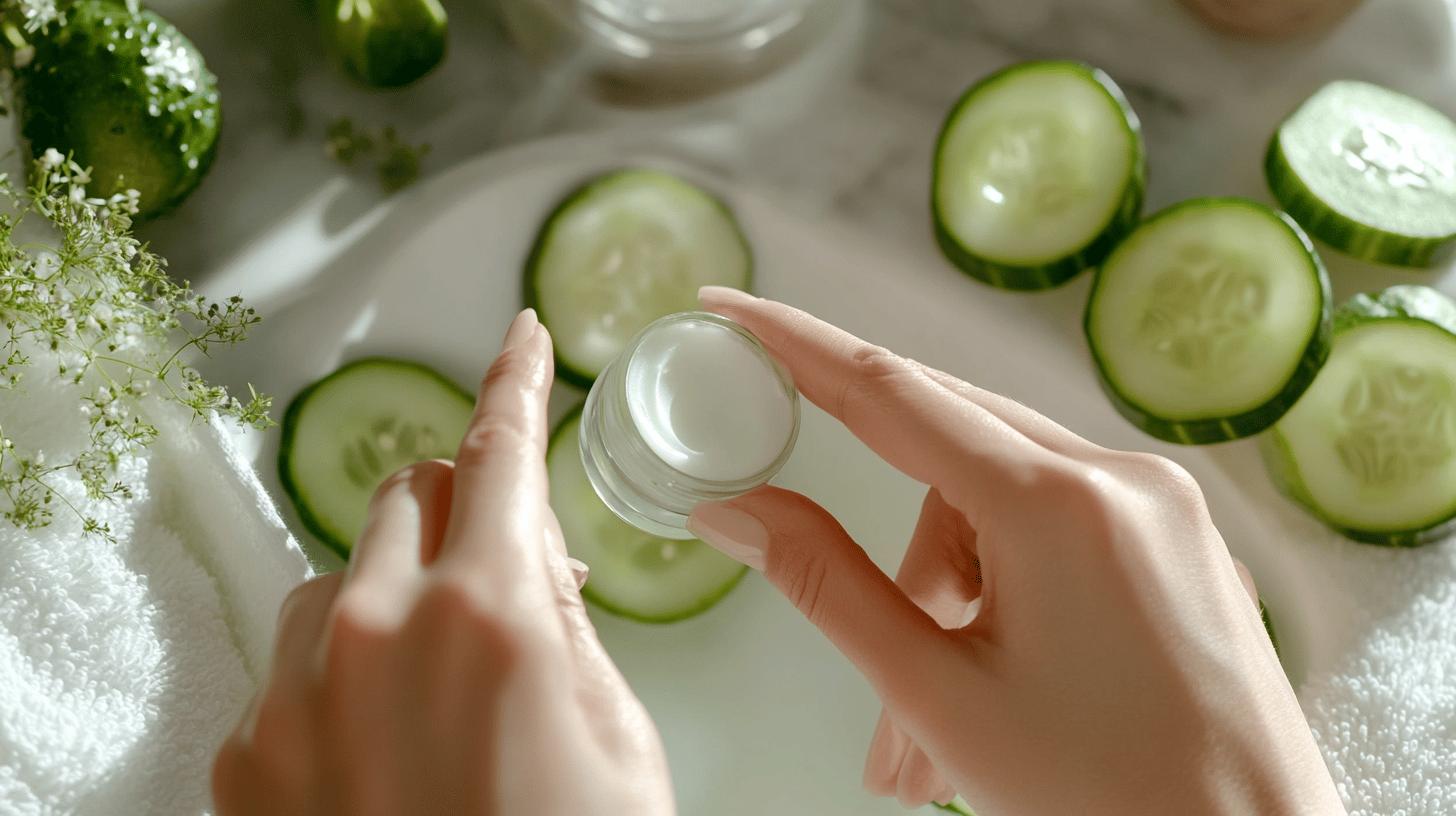
Dermatologists advise integrating lifestyle changes with under-eye treatments to effectively combat dark circles and puffiness. Improved sleep and hydration are crucial, as they enhance skin regeneration and maintain elasticity, which are foundational for healthy under-eye skin. Experts suggest leveraging topical treatments that include ingredients like caffeine and retinol for gradual improvements. These should be complemented by lifestyle adjustments such as maintaining a regular sleep schedule and staying hydrated. The combination of these elements is essential for achieving and maintaining optimal results over time.
User reviews consistently emphasise the significance of adhering to a daily skincare routine to achieve visible improvements in under-eye concerns. Many users report that while topical treatments require patience and consistency, they do yield significant results when used diligently. Conversely, professional treatments such as laser therapy and fillers are frequently praised for their immediate and dramatic effects. However, users also note the necessity of ongoing maintenance and consultation with skin care professionals to sustain these results. Combining professional treatments with consistent at-home care appears to be the most effective strategy for long-term improvement and satisfaction.
Final Words
Understanding the causes of under-eye dark circles and puffiness is essential in tackling these concerns effectively. From genetic factors to lifestyle choices, solutions range from topical creams to natural remedies. Significant long-term benefits often require professional treatments like laser therapy and fillers.
Implementing lifestyle changes and preventative measures can maintain and enhance under-eye health. Combining these approaches ensures comprehensive care. For those keen on combatting dark circles and puffiness, exploring a mix of treatments and lifestyle changes offers promising results in achieving brighter, youthful eyes.
FAQ
What causes under-eye dark circles and puffiness?
Under-eye dark circles and puffiness have various causes, including:
- Genetics: Some people are predisposed due to hereditary factors.
- Lifestyle: Poor diet, lack of sleep, stress, and inadequate hydration contribute significantly.
- Health Issues: Allergies or nasal congestion can exacerbate these conditions as well.
How do sleep and allergy impact under-eye appearance?
Sleep deprivation often results in dull skin and prominent dark circles, as insufficient rest affects blood circulation. Allergies can cause inflammation and swelling under the eyes, making puffiness more noticeable.
How do dehydration and ageing affect under-eye areas?
Dehydration leads to the skin appearing dull and highlights dark circles. Ageing reduces skin elasticity, causing sagging and increased prominence of both puffiness and circles.
What topical treatments are available for under-eye concerns?
Effective topical treatments often include:
- Creams and Serums: Ingredients like caffeine, vitamin C, hyaluronic acid, and retinol are beneficial for reducing puffiness and brightening skin.
- Consistency: Regular application is key to achieving and maintaining results over time.
Which topical products are recommended?
Top products include:
- Neutrogena Hydro Boost Gel-Cream
- The Ordinary Caffeine Solution 5% + EGCG
- Ole Henriksen Banana Bright Eye Crème
- RoC Retinol Correxion Eye Cream
- Origins GinZing Refreshing Eye Cream
How effective are natural and home remedies for under-eye issues?
Natural remedies like cold compresses, cucumber slices, tea bags, and aloe vera provide temporary relief for under-eye puffiness and dark circles. Their effectiveness lies in soothing and reducing swelling.
What are the best home remedies for under-eye problems?
Common remedies include:
- Cold Compress: Reduces swelling and refreshes skin.
- Cucumber Slices: Has a cooling effect to reduce puffiness.
- Tea Bags: Anti-inflammatory properties can alleviate swelling.
- Aloe Vera: Hydrates and soothes the under-eye area.
What professional treatments are there for under-eye concerns?
Professional treatments offer more intense solutions and include:
- Laser Therapy: Effective for long-term results
- Fillers: Restore volume and smooth skin.
- Chemical Peels: Enhance texture and tone.
Treatment costs vary significantly, with laser therapy ranging from £240 to £480 per session and fillers between £480 and £1,600 per syringe.
How do lifestyle changes prevent under-eye issues?
Key changes include:
- Proper Sleep: Improves skin health and appearance.
- Hydration: Vital for maintaining skin’s elasticity and brightness.
- Diet: Antioxidant-rich foods strengthen skin health.
What expert recommendations are there for under-eye treatments?
Dermatologists recommend combining lifestyle adjustments like better sleep and hydration with topical treatments. Consistent use of such methods is often highlighted in user reviews for noticeable improvements.

